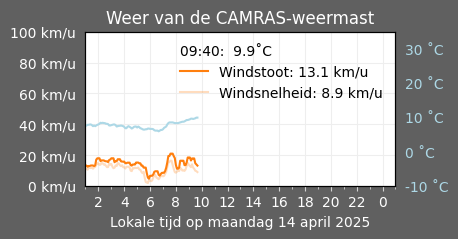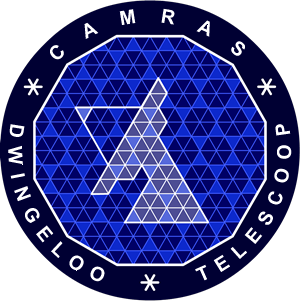WebSDR is a Software Defined Radio receiver connected to the internet that allows many listeners to listen at the same time and tune in individually.
The CAMRAS WebSDR stream can be listened to at http://websdr.camras.nl:8901 (opens in a new window or tab).
For webSDR reception JAVA must be installed on the computer or the browser must support HTML5. With some web browsers, it is necessary to manually grant the website permission to pass on audio.
The CAMRAS WebSDR stream also works on most tablets and mobile phones and can be listened to at http://websdr.camras.nl:8901/m.html (opens in new window or tab) if necessary.
When logging in, a cookie is placed with which name (not mandatory) and settings are retained.
The webSDR offers you, via the separate frequency bands, live reception using the Dwingeloo telescope:
- The radio telescope receives so-called “Earth Moon Earth” (EME) moon echoes at a frequency of 432 MHz (70 cm wavelength).
- The radio telescope receives so-called “Earth Moon Earth” (EME) moon echoes at a frequency of 1296 MHz (23 cm wavelength).
When the telescope does not actually follow the moon, it is still possible to receive signals from radio amateurs on the aforementioned frequencies. This is due to reception via so-called “side lobes” of the dish and via atmospheric reflections.
If there is no live stream, the CAMRAS WebSDR will play recordings from:
- The Echoes of Apollo project made during the EME session with the 300 meter Arecibo radio telescope at a frequency of 432 MHz (70 cm wavelength). This image was taken on April 17, 2010 at around 19:00 UTC.
- The Echoes of Apollo project 2009. This image contains a QSO between PI9CAM (the call sign of the Dwingeloo radio telescope) and HB9MOON at a frequency of 1296 MHz (23 cm wavelength).
You can also listen to satellites and meteor echoes on the CAMRAS WebSDR stream:
- On the 2-meter band receiver echoes of the radar system GRAVES in France. CAMRAS uses a 5-element yagi antenna oriented to the south, 10 meters above the ground, in the radio interference-free zone near the radio telescope.
- On the other 2-meter band receiver, communication between radio amateurs can be heard and amateur satellites can also be received.
- On the 6-meter band receiver echoes of the Belgian beacons at Dourbes and Ypres. CAMRAS uses a 3 elements Yagi antenna pointing south also in the radio interference free zone near the radio telescope.
This WebSDR was developed for CAMRAS by Pieter Tjerk de Boer (PA3FWM) Pieter Tjerk de Boer (PA3FWM) and the software now has many users. More information at: www.websdr.org.

